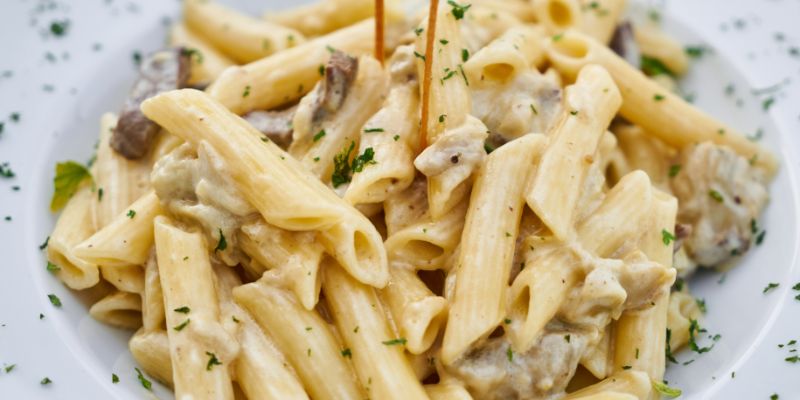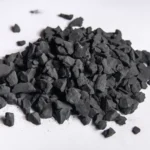Are you a pasta lover looking for a nutritious twist on your favorite dishes? Enter protein pasta, the game-changer in the world of carbs. Whether you’re an athlete seeking to fuel your workouts or simply aiming to eat healthier without sacrificing flavor, protein pasta is here to save the day.
Imagine indulging in spaghetti that not only satisfies those carb cravings but also boosts your protein intake. With a variety of options available today, this innovative food can transform any meal into a powerhouse of nutrition. Ready to dive deeper into the wonderful world of protein-packed noodles? Let’s explore everything you should know about this delicious alternative!
The Importance of Protein in a Healthy Diet
Protein plays a vital role in maintaining overall health. It is one of the building blocks of life, essential for growth and repair. From muscles to skin and hair, protein is crucial for our body’s structure.
Incorporating enough protein into your diet aids in muscle recovery after exercise. It can also help manage weight by promoting feelings of fullness, which may prevent overeating.
Moreover, proteins are made up of amino acids—some are essential and must be obtained through food. These amino acids support various bodily functions, including hormone production and immune system maintenance.
A balanced intake of protein can contribute to better energy levels as well. When combined with other nutrients like carbohydrates and fats, it helps fuel daily activities efficiently while offering sustained energy throughout the day.
Understanding Pasta and Its Nutritional Value
Pasta is a staple food enjoyed worldwide, but its nutritional profile varies widely. Traditional pasta is primarily made from wheat flour, which provides carbohydrates for energy. However, it often lacks in protein and can be lower in fiber.
The type of grain used plays a significant role in the health benefits of pasta. Whole grain varieties retain more nutrients than refined options. They offer higher fiber content, which aids digestion and keeps you fuller longer.
Additionally, many brands now produce alternative pastas using legumes or quinoa. These options are not only gluten-free but also significantly boost protein levels compared to traditional pasta.
When choosing your pasta, consider both its source and preparation methods to maximize nutrition while still enjoying your favorite dishes. Balancing ingredients will enhance your meals without sacrificing flavor or satisfaction.
Common Misconceptions about Protein in Pasta
Many people believe that all pasta is a poor source of protein. This misconception stems from traditional wheat-based varieties, which have lower protein content compared to other foods.
However, the rise of alternative pastas has changed this narrative. High-protein options made from legumes, quinoa, or even lentils offer significantly more protein per serving than standard pasta.
Another common belief is that higher protein means less flavor or texture. In reality, many high-protein pastas maintain a delightful taste and can be just as versatile in recipes as their traditional counterparts.
Some also think they need to give up pasta entirely if they’re focusing on protein intake. The truth is you can enjoy your favorite dishes while still increasing your protein consumption by choosing these innovative options.
Types of High-Protein Pasta Options
High-protein pasta options are gaining popularity among health enthusiasts. These alternatives often feature a blend of traditional ingredients with added protein sources.
Legume-based pastas, such as chickpea or lentil varieties, pack a nutritious punch. They contain fiber and essential vitamins alongside their higher protein content.
Another option is whole-grain pasta made from quinoa or brown rice. This provides not only increased protein but also a rich source of complex carbohydrates.
Egg noodles stand out too, offering significant amounts of protein while delivering that classic pasta taste.
For those seeking plant-based choices, there are innovative products made from pea protein or soy flour. These cater to various dietary preferences without sacrificing flavor or texture.
These diverse selections allow everyone to enjoy the benefits of high-protein pasta in creative ways.
How to Incorporate High-Protein Pasta into Your Meals
Incorporating high-protein pasta into your meals can be both fun and rewarding. Start by substituting regular pasta with protein-rich options in your favorite dishes. This simple swap boosts the nutritional profile without sacrificing flavor.
Try adding it to classic recipes like spaghetti bolognese or creamy alfredo. The added protein will keep you fuller for longer, making these meals even more satisfying.
Consider experimenting with salads as well. Toss high-protein pasta with fresh veggies, a sprinkle of cheese, and a light dressing for a nutritious lunch option.
Don’t forget about one-pot meals! Combine high-protein pasta with vegetables and lean proteins for an easy dinner that’s packed with nutrients.
With creativity, you can seamlessly integrate this powerhouse ingredient into any meal throughout the week. Enjoy the process of discovering new flavors while enhancing your diet!
Delicious Recipes Using High-Protein Pasta
High-protein pasta opens up a world of culinary possibilities. One simple yet satisfying dish is protein-packed spaghetti aglio e olio. Toss cooked high-protein spaghetti with sautéed garlic in olive oil, and finish it off with fresh parsley and red pepper flakes for a kick.
For something heartier, try making a creamy chicken alfredo using high-protein fettuccine. Cook the pasta and mix it with grilled chicken, homemade alfredo sauce made from Greek yogurt, parmesan cheese, and steamed broccoli for added nutrients.
If you’re looking for a refreshing salad option, consider a Mediterranean protein pasta salad. Combine chilled high-protein rotini with cherry tomatoes, cucumbers, olives, feta cheese, and drizzle with balsamic vinaigrette for an energizing meal on warm days.
Each recipe highlights the versatility of high-protein pasta while delivering flavor and nutrition to your plate.
Conclusion: The Role of Protein in a Well-Balanced Diet
Protein plays a vital role in maintaining overall health. It supports muscle growth, aids in recovery after exercise, and contributes to satiety. Including protein-rich foods like high-protein pasta can help balance your diet and provide the nutrients needed for an active lifestyle.
Incorporating protein pasta into meals is an excellent way to boost your intake without sacrificing flavor or enjoyment. By diversifying your diet with various high-protein options, you not only enhance nutritional value but also keep mealtime exciting.
Remember that while protein is crucial, it’s important to enjoy a variety of food groups for optimal well-being. Embrace the versatility of protein pasta as part of a balanced approach to nutrition. Your body will thank you!







